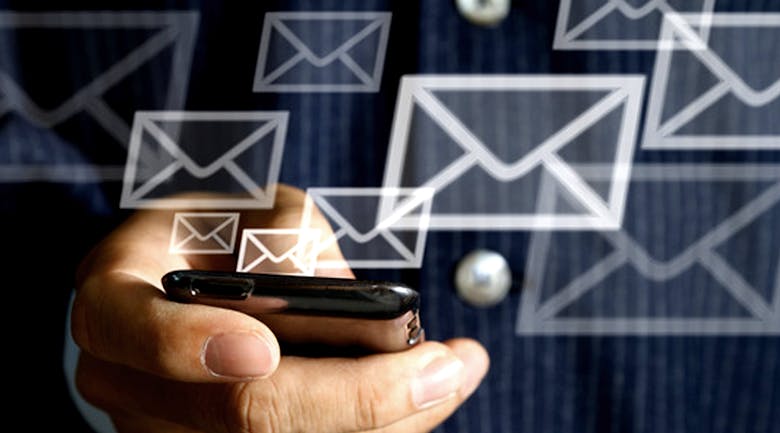Email Marketing is how you can let your personas know about your promotional relevant to their interests, or what their next step in the buying cycle should be.
Prep for Step 1: Optimize for Deliverability
Segment Your List: You need to segment your email list into different groups to ensure each group gets relevant content. You don’t want to overly sell to your customers – you want them to digest and share your content. You could have four segments labeled ‘leads’, ‘customers’, ‘win-backs’, and ‘newsletter’.
Set Expectations: Setting the right expectations is important so you don’t annoy your email lists.
The expectations you should set include:
- Why they should subscribe
- How many emails will they receive
- When they will receive the emails
- What the emails will be about
- What address and brand/person are the emails being sent from. Recommend that they add the address to their safe sender list.
If you set the right expectations, you will reduce the chance someone will be surprised by your email and unsubscribe from your list.
Respect Their Privacy: You must respect your subscribers’ privacy so they will stay an active subscriber. State that you will never sell their information or give their information to a third party. You might want to create a privacy policy that your subscribers can read and print. You must also honor their request to be removed from your list within 10 business days to comply with the CAN-SPAM law.
HubSpot’s email marketing and lead nurturing application includes your company name, address, and unsubscribe link in the footer of the email.
Step 1: Determine the Goal
To have a successful email campaign you need to determine the goal of the email. This will allow you to accurately measure the success of the email. Here are some goals to consider:
- Alert customers of a new feature or product and see how many customers adopt it.
- Announce an upcoming event and measure how many people register for it.
- Send an email to get people to subscribe to your blog and measure how many subscribed.
Step 2: From Name & Email Address
The “from” name and email address should be consistent. You should have the email come from a person at the company or from a brand name, followed by a dash and the company name.
For example:
The “from” name could be setup like this, John Smith – HubSpot. You should then match the email address with their “from” name, e.g. [email protected] This will improve the chance that the email doesn’t get caught in a spam filter and is more personal.
You should not send the email from an address like noreply@, sales@, marketing@, etc. These email addresses commonly get picked up by spam filters and are far less personal than a real person, lowering engagement.
Step 3: Subject Line
Your email subject line should be a call to action so the recipient knows what action they need to take and why. Begin with the most important information in case the subject line gets cut off in their inbox. The subject line should be under 45 characters, short, and to the point. The more complicated you make the subject line – the higher the chance people will not read the email.
Step 4: Email Body
Most people read emails in less than 10 seconds. Therefore, you need to put your most important and compelling information at the top of the email. This is also beneficial because most email clients allow the user to “preview” the email without having to open it.
Links
You should include a link in the first one or two sentences in the email. Most emails usually have one goal, so you should limit information that doesn’t help you achieve that goal. We recommend you include two or three links in the email, but have each link go to the same website page. You should also bold every link in your email, which will help increase your click-through rate.
Every link in the email should be tracking URL so you can understand how many people clicked-through to your website and converted on your landing page. HubSpot’s email marketing and lead nurturing applications automatically creates a tracking URL for each link, which you can track through the Sources tool.
Plain Text
You should create a plain text version of the email to for email clients that are configured by the recipient to only accept plain text emails. HubSpot’s email marketing and lead nurturing applications allow you to create both an HTML and plain text version.
Personalize
We recommend you personalize the email by adding the receipt’s first name in the email body or subject line; you can also experiment with adding the company name in the subject line.
Images Make sure you have less than five images in the email to prevent the email from getting caught in a firewall or spam folder. Create links for all the images that are associated with a call to action, so people can click on the image and go to your website. Each image should include a descriptive alt text phrase, so if recipients don’t accept images, the alt text
will convey what the image is about.
CAN-SPAM
By law, you must include your company name, address and an unsubscribe link in your email to comply with the CAN-SPAM law.
Step 5: Email Signature/Footer
Your email signature should be consistent with the “from” name in the email. You should sign the email and include any other information you think the recipient’s could find useful.
This is a great place to add social media icons (HubSpot adds them automatically to emails), your blog URL, or announcement s for upcoming events or products.
Step 6: Testing Your Email
To ensure the best results, you should send the email to employees at the company to make sure it doesn’t get caught by their spam filters. You should have someone else proofread the email and click on every link in the email. Have them communicate back to you if there are grammar mistakes, something that confused them, a misaligned offer, etc.
Step 7: Send the Email
Double-check all of the links in the email and make sure both the HTML and text based version are set up properly.
Step 8: Listen and Respond
The work does not end once you send them email. The other goal of email marketing is to build relationships your list and subscribers. You need to be sure someone is responding to reply; preferably the person the email came from. Any questions or comments need to be handled in a timely manner.
Step 9: Measure
In order for you to know how much the email contributed to reaching your goal, you need to measure the click-through rate and unsubscribe rate. More importantly, look at your HubSpot Sources graph to see if there was a spike in your website traffic the day of and the day after you sent the email. If the email’s goal was to generate leads, you then need to analyze how many leads you received and the quality of those leads.
Source : HubSpot
You might also want to check this blogs:
- How to Blog and Increase Your Traffic in 11 Steps
- 20 Ways to BrainStorm before to Create a New Blog
- How To Promote Your Blogs Online
- Your Business Doesnt Need a Website, What You Really Need is a Platform
- 13 Ways to Create New Content Offers for Your Persona
- 7 Step Guide to Creating a Resource Center for Your Contents
- What is the definition of Persona Online??
- 8 Steps to Create Contents & Lead Generation
- 10 Steps that will Optimize Your Landing Pages
- Create Call to Actions in 8 Steps
- 9 Awesome Steps to Create Email Marketing for Business
- 5 Best Ways to Test Your Email Contents
- 5 Steps to Get or Increase Guest Blogging
- 4 Ways to Drive Traffic in Your Landing Pages
- 10 Steps to Create Awesome Email Newsletter
- 10 Steps to Create a Monthly Inbound Marketing Report
- Content That Should Be on Your Lead Nurturing Emails
Start today to build your business with HubSpot (Inbound Marketing Software)





